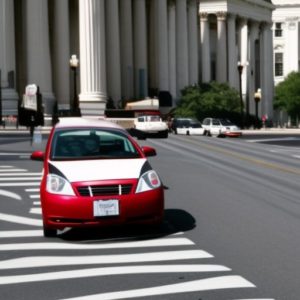
Inflation, Electric Vehicles, and Washington DC
Electric vehicles (EVs) are a growing trend worldwide, with an increasing number of consumers opting for these vehicles due to their eco-friendliness and economic benefits. As the adoption of EVs continues to grow, it is expected to have a significant impact on various industries, including the automotive, energy, and infrastructure sectors. In this essay, I will explore how the widespread adoption of EVs could affect inflation in Washington DC.
To understand the potential impact of EVs on inflation in Washington DC, it is essential to consider the various factors that contribute to inflation in the region. Inflation is a measure of the rate at which the general price level of goods and services is increasing over time, and it is influenced by a range of factors such as supply and demand, wages, and energy prices.
One of the main ways that EVs could impact inflation in Washington DC is through changes in demand for gasoline. As more people switch to EVs, there is likely to be a decrease in demand for gasoline, which could lead to lower gasoline prices. Lower gasoline prices could, in turn, lead to lower transportation costs for businesses and consumers, reducing the cost of producing and transporting goods and services.
Lower transportation costs could also lead to lower prices for consumers, which could increase demand for goods and services, leading to increased economic growth. This growth could then lead to increased employment and higher wages, which could further boost demand for goods and services, leading to a further increase in economic growth.
However, it is important to note that the adoption of EVs could also have negative effects on inflation. For example, the production of EVs requires a significant amount of resources, including metals and rare earth elements. As demand for these resources increases, their prices could rise, leading to higher production costs for EV manufacturers.
Additionally, the infrastructure required to support EVs, such as charging stations, may require significant investments, which could increase the cost of electricity and other related expenses. Higher electricity prices could lead to increased production costs for businesses, which could lead to higher prices for goods and services, ultimately leading to higher inflation.
Moreover, the higher cost of EVs may also affect inflation by decreasing demand for other goods and services, which could lead to decreased economic growth. As consumers spend more money on purchasing EVs, they may have less disposable income to spend on other goods and services, leading to reduced demand and lower economic growth.
Another factor that could influence the impact of EVs on inflation in Washington DC is government policies. The government may introduce policies that incentivize the adoption of EVs, such as tax credits and subsidies, which could reduce the cost of purchasing and owning an EV. Such policies could lead to increased demand for EVs and lower gasoline prices, reducing transportation costs and boosting economic growth.
On the other hand, the government may also introduce policies that impose taxes or fees on EVs to generate revenue to maintain and improve infrastructure for EVs. Such policies could increase the cost of owning an EV, potentially reducing demand and leading to higher inflation.
In conclusion, the widespread adoption of EVs is likely to have a significant impact on inflation in Washington DC, both positively and negatively. While lower transportation costs and increased economic growth could lead to lower inflation, increased production costs, infrastructure expenses, and reduced demand for other goods and services could lead to higher inflation. Government policies may also play a critical role in shaping the impact of EVs on inflation in Washington DC. Therefore, policymakers and businesses must closely monitor and adapt to the changes brought about by the growing adoption of EVs to manage the potential impacts on inflation.
